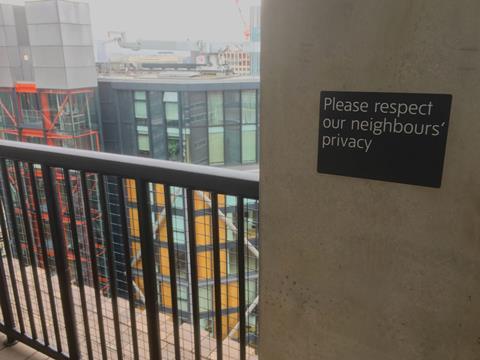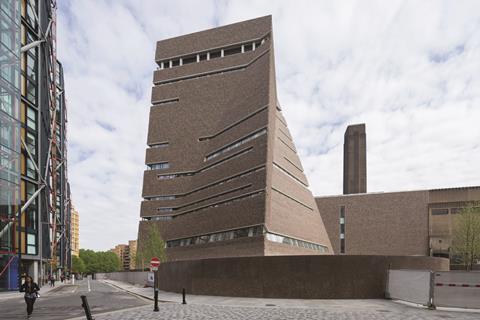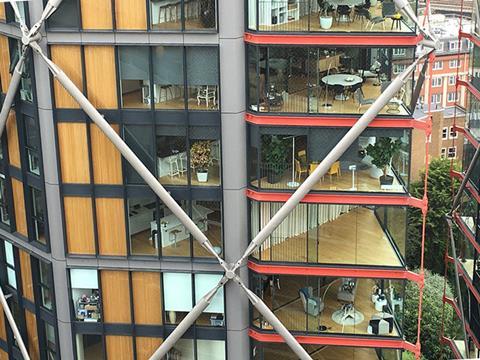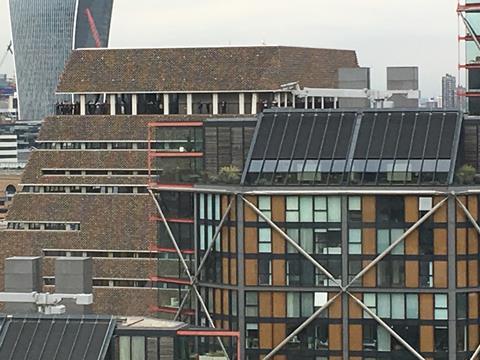Common design feature in spotlight as residents lose Tate Modern privacy case
The High Court judge who refused pleas from residents of RSHP’s Neo Bankside for greater privacy from Herzog & de Meuron’s Tate Modern extension has raised issues over the use of fully glazed winter gardens in the design of luxury homes.
Mr Justice Mann yesterday ruled against five residents of Neo Bankside who argued that the degree of visual scrutiny they faced because of the new Blavatnik Building’s 10th-floor viewing gallery breached their human rights.
He said Native Land, which developed the Stirling Prize 2015-shortlisted scheme, and the occupiers who bought the flats had “created or submitted themselves to a sensitivity to privacy which is greater than would be the case of a less-glassed design”.
The judge said it would be wrong to allow a “self-induced exposure to the outside world” to create a liability in nuisance, adding: “Other architectural designs would have reduced the invasion of privacy to levels which should be tolerated.”
Mr Justice Mann observed that the residents who took the Tate Gallery’s board of trustees to court to seek restrictions on the viewing gallery had all incorporated the triangular winter gardens in to the main living space of their homes.
He said the winter gardens were single-glazed and “not conceived by the developers as part of the living accommodation” but instead as indoor balconies providing “quasi-outdoor amenity” for the flats, and separated by double-glazed doors from the main homes.
It is no part of the law of nuisance to discourage architectural adventure
Mr Justice Mann
Mr Justice Mann’s ruling said planning officers’ advice to the 2007 Southwark council committee meeting that approved Neo Bankside had described the spaces as “‘winter garden’ balconies”, and that conditions required further detail on “framing, louvre-system and opening vents” for the scheme’s glazing.
“What ultimately happened was that drawings were submitted and approved which did not contain the louvres apparently appearing on glassed elements in the preceding application,” he said. “There is some louvring apparent but it is decorative – wooden panels over solid structural panes. Thus any proposals which might have involved creating privacy from some form of structure disappeared without comment.”

The judge said that Southwark council’s focus appeared to be more to do with external appearance than with privacy for residents. And he also noted that there had been a “heavy degree of acquiescence” between the development teams for Neo Bankside, which was completed in 2012, and the Tate Modern extension – now known as the Blavatnik Building – which opened to the public in 2016.
“It is the case that the winter gardens were originally intended as quasi-balconies,” he said. “As such they would attract less privacy in terms of overlooking than living accommodation, on normal planning considerations.
“It may well be that that deflected the attention of the planners, developers and Tate representatives from a more detailed consideration of privacy matters.”

The judge put on record his desire not to criticise the claimants, developers or architects of the schemes – or their designs.
He said it was “no part of the law of nuisance to discourage architectural adventure”. However he added in relation to Neo Bankside: “The architectural style in this case – including the more striking design of the block as a whole – has the consequence of an increased exposure to the outside world”.
>> Also read: Tate Modern neighbours lose High Court challenge
Natasha Rees, partner and head of property litigation at Forsters, which represented the homeowners, said she was “extremely disappointed” with the result.
“The limited steps taken by the Tate to prevent visitors viewing into my clients’ apartments are ineffective and both my clients and their families will have to continue to live with this daily intrusion into their privacy,” she said. “We are considering an appeal to the Court of Appeal.”
Prices of homes in Neo Bankside have ranged from £2m to £19m. One of the claimants in the case told a hearing last year that they had once counted 84 gallery visitors photographing their south London flats in the space of around 90 minutes.



















8 Readers' comments